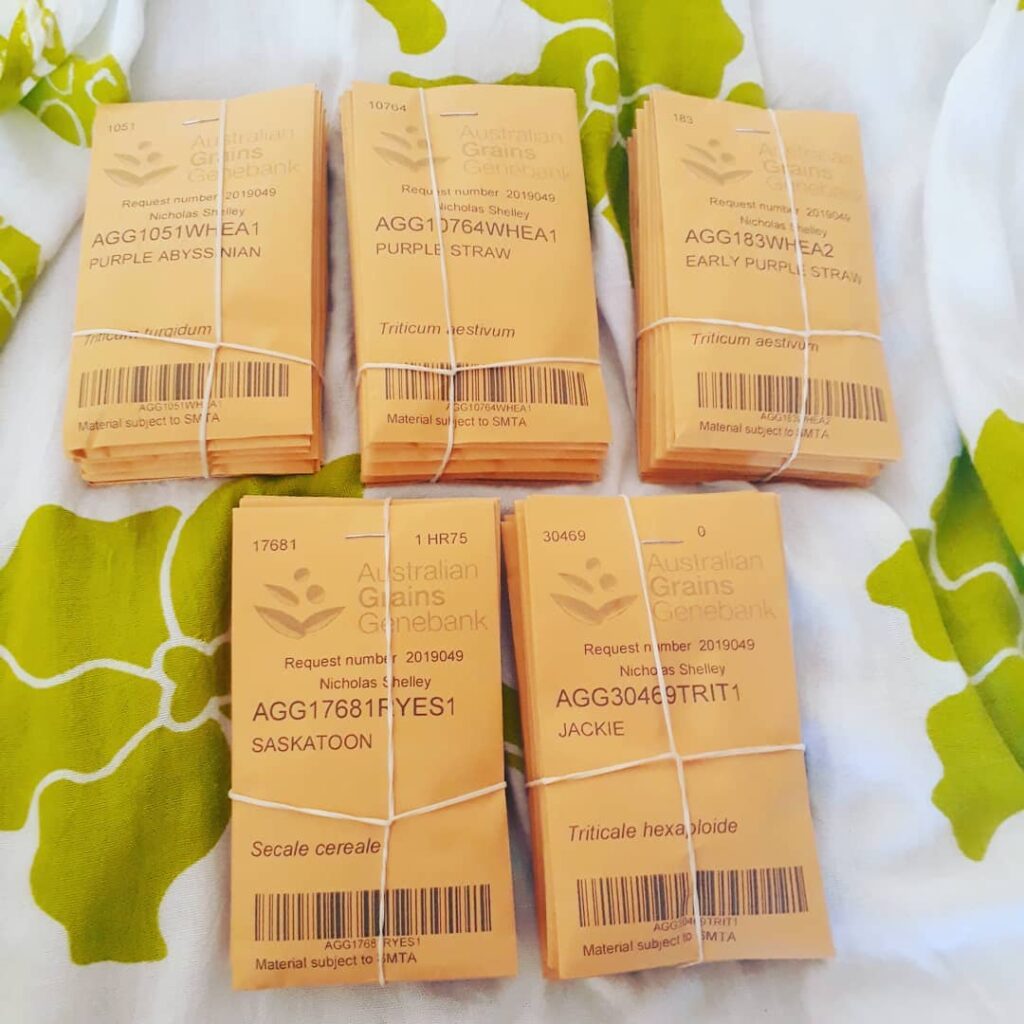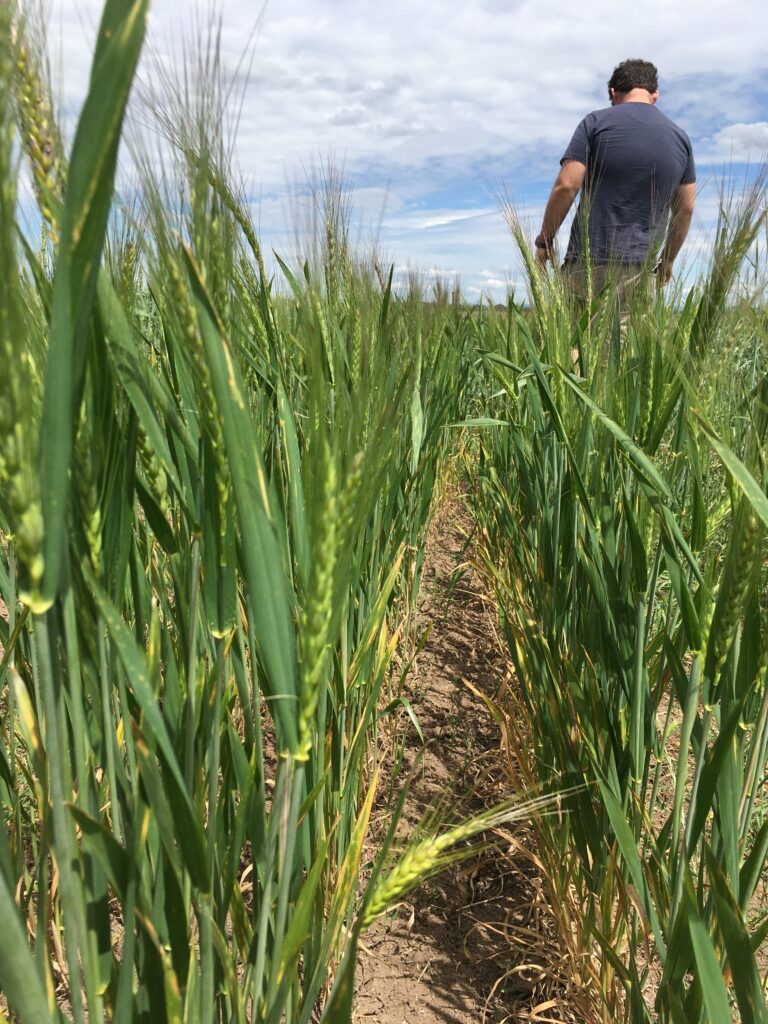For the last four years our farmer friends, Steve and Tan, have been growing up some trial grains originally sourced from the Horsham Genebank, with the intention of one day having something new to share and sell. See previous posts for the detail and full story of their journey to date. During the process it was decided to blend various grains together and in 2022, there was finally enough grain to spare for us to be able to bake bread from two of these blends; Purple Straw which is made up of 14 varieties and Yecora red wheat, made up of 9 varieties.
Below are an adaptation of baker Nick’s notes whilst trialing these two flours. Hopefully in a couple weeks we’ll have more to test, taste and share from the latest harvest.
Purple Straw Bread Trial
Milling
Being such small quantities of grain Nick milled it using our Hawos Queen2 bench top stone mill. Good little mills, for little jobs. The purple straw flour came out feeling soft and finer than we expected with big bits of bran. It holds together when squeezed, which might indicate a good amount of moisture in the grain. The smell reminded Nick of the day he visited Steve and Tan for harvest of the heritage grains, kinda sweet like honey, malty and golden. The flour was fairly white in colour and the bran had a nice copper tint to it. A bigger and better mill would likely get a lovely fine flour out of this grain. The flour used for this trial was unsifted as we thought that would be a good starting point to see what the flour could produce.
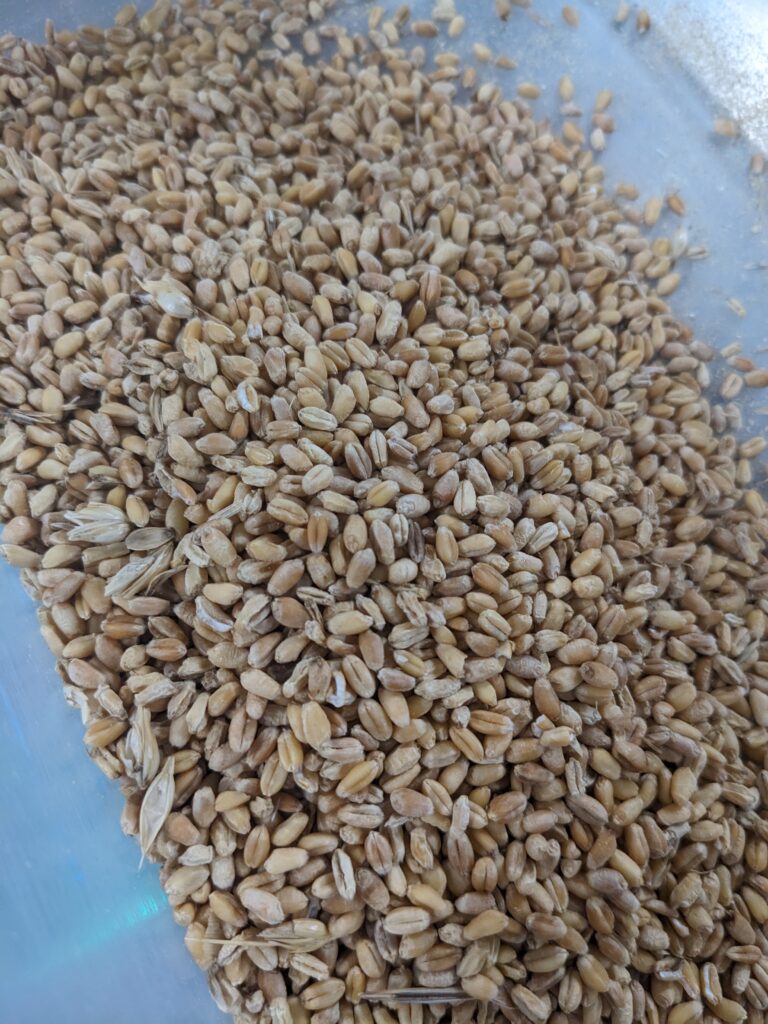
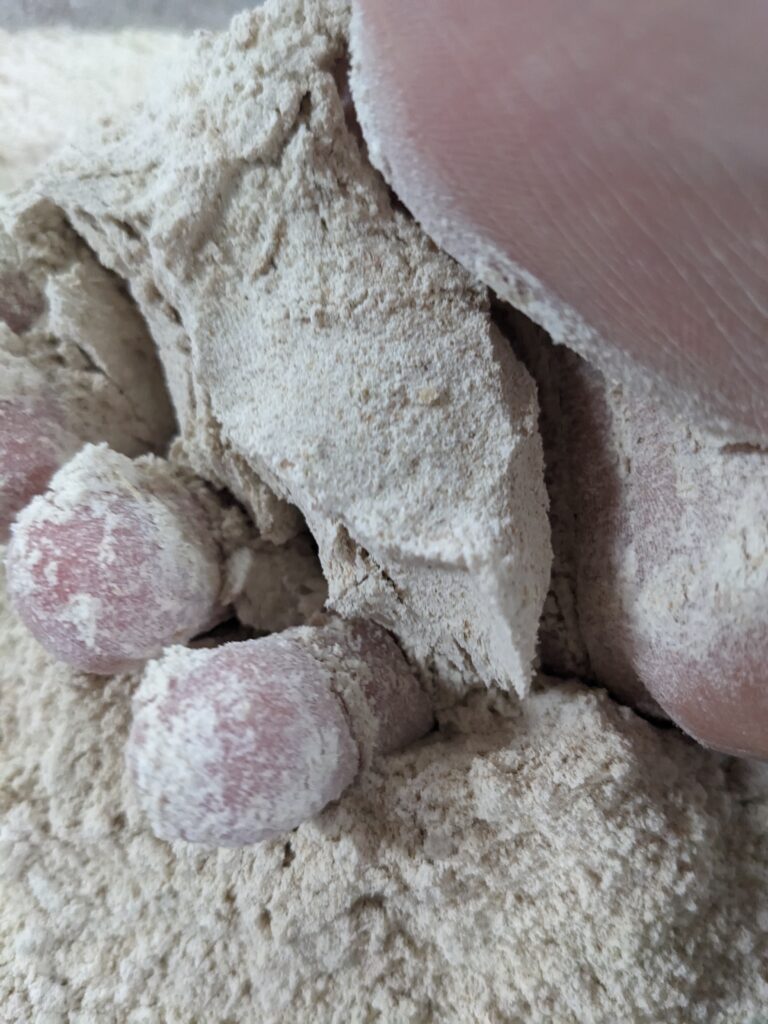

Mixing
Nick used a formula he designed specifically for new flour trials which had a lower hydration than what we normally do and with all other ingredients being consistent between trials any differences in the loaves should be attributable to the trial flour.
Method:
1. Mix flour and water.
2. Add in salt.
3. Add in sourdough culture (we used our usual wheat based sourdough culture).
“The dough (just flour & water) smelt sweet, buttery and rich, like a biscuit dough.
It was a tacky dough but not wet and sloppy, didn’t add much extra water as I knew from reading about purple straw and bread making that it probably couldn’t handle it.
It was however a bit too small for one mixer and too big for the other so maybe it could have been better developed than it was. Decided to prove and bake it in a tin as it didn’t feel like a strong dough.
Maybe next time try another method like a ‘sift and scald’ to see if we can get more strength in the dough but we only had 900g of grain for this trial so we kept it simple just to see what happens.”

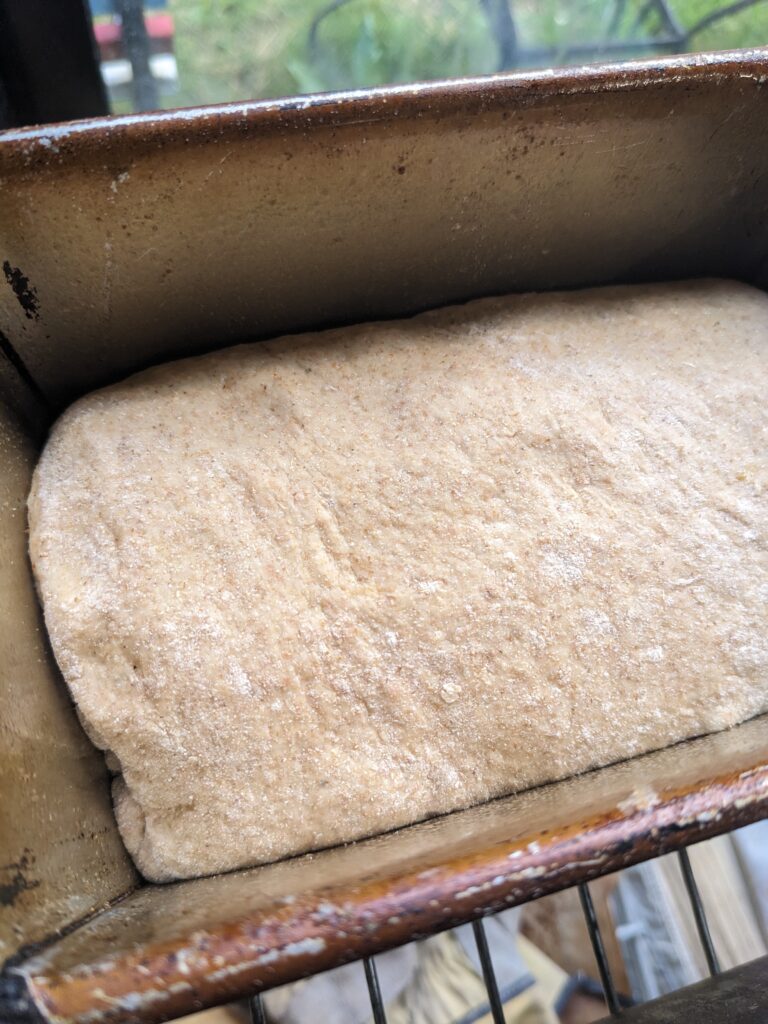
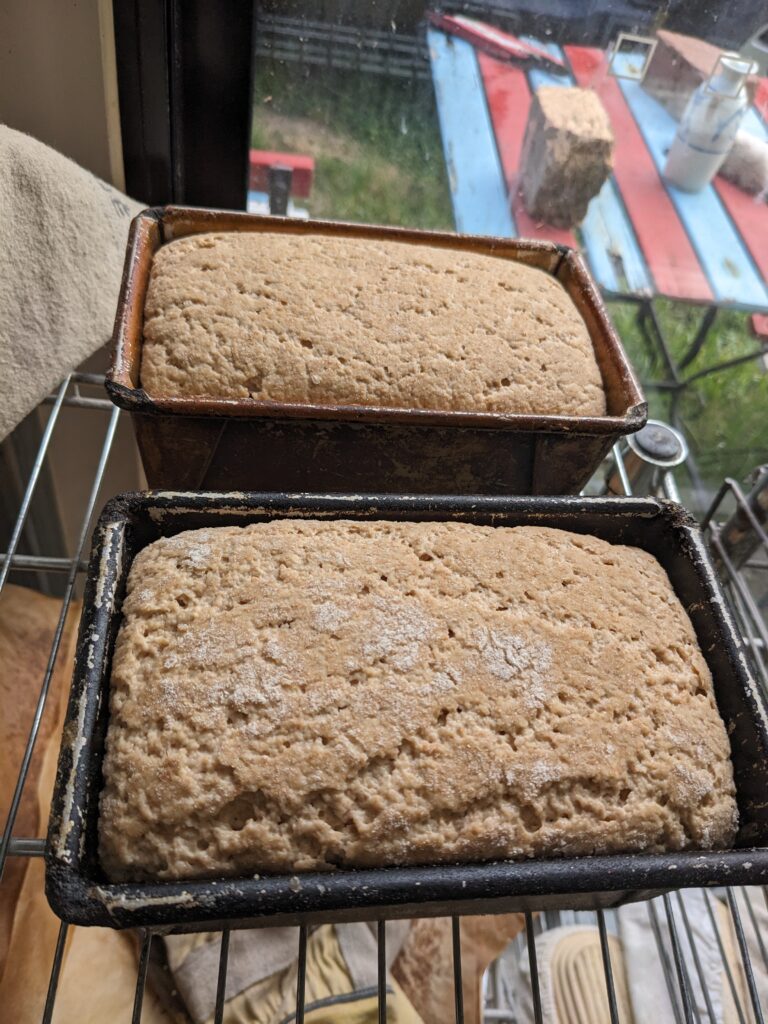
Folds & ferment
“Feeling a bit stronger after the first fold (at 40mins from mixing).
Still a bit tacky but also maybe a touch dry.
Second fold, can see dough pulling apart slightly. Not developed and dough seems weak. Shaped and put in tins after the next 40min stretch.
Dough was actually reasonably extensive and shaped nicely.
Each loaf weighed 910g before baking.
Baked well, bit of kick despite cracking over the top like rye.
Still smells and tastes like malt and honey. Also tastes a bit grassy.”
Team response from Steve, Tan and others who tried the loaf was it doesn’t work well as a loaf of bread, maybe better to use the flour for other things. Nick and I felt that with more trials we could make a better textured loaf, for instance blending it with other flours, which could also tone down the raw ‘straw’ flavours or by sifting the flour and taking out some of the bran.

Yecora Red Wheat bread trial
Milling
“Milled courser than the Purple Straw grain. Ran through mill to crack grain, then ran back through to obtain a finer flour as the grain seemed harder than the Purple Straw and we find this is a useful method for hard grains using our little mill. We used the flour unsifted again. (Although Nick did sift out some chaff and stones as the grain we were given was not yet cleaned, being such a small amount).
Clumps nicely, smells sweet, earthy and fresh . . . petrichor like.
Dark copper-ish hue to the flour and bran.”
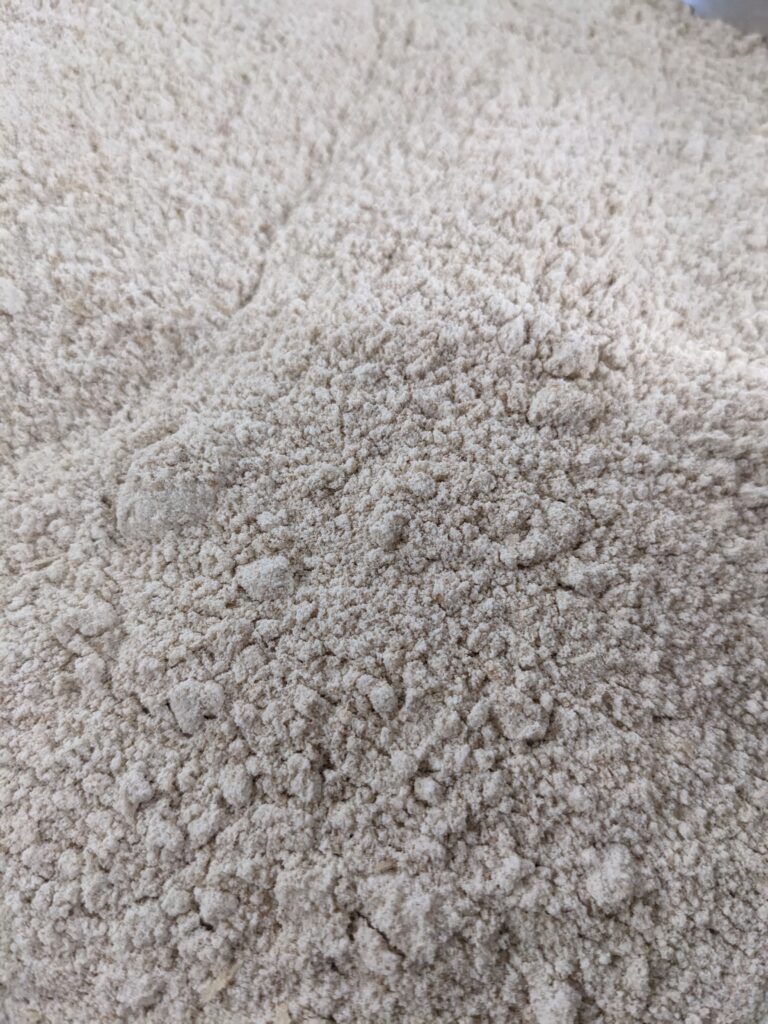

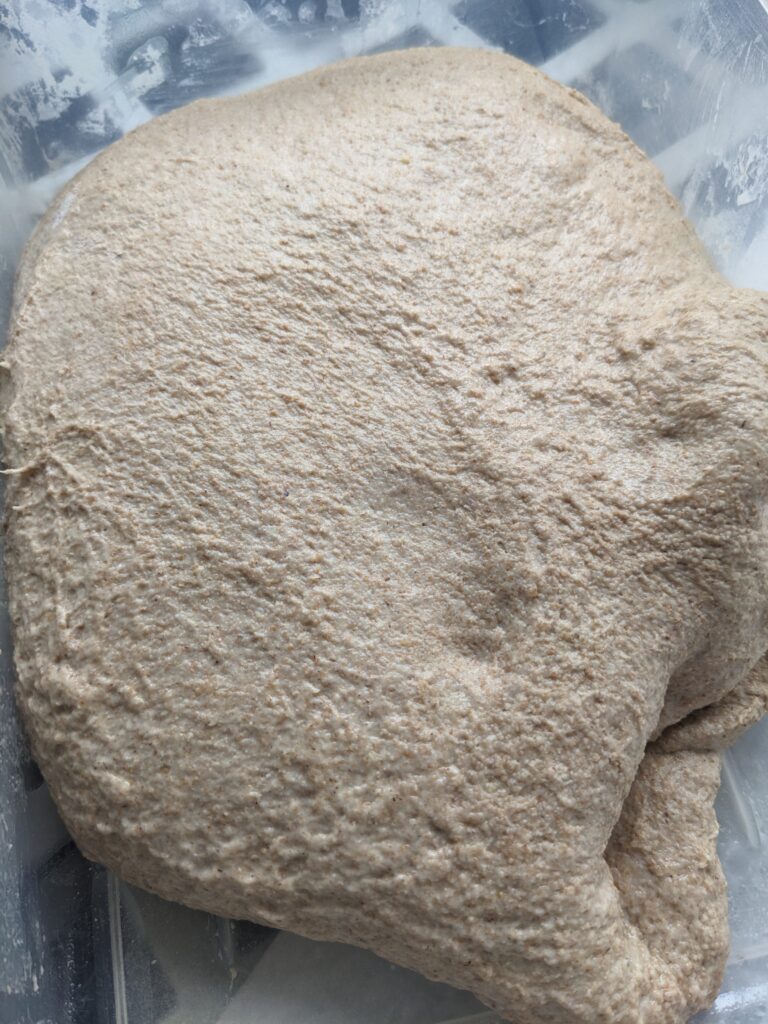
Mixing
“Darker colour being red wheat.
Smells creamy & buttery.
Decent strength. Started with only flour and water, then added salt, then starter.
Wanted to see how each part of the dough looked before adding salt /starter.
Added 100mls extra water, on top of the base recipe. Roughly 80% water in the final loaf (based on baker’s percentage).
Final dough temperature was 30c, but it was only two loaves so assumed it would come down a couple degrees by the first fold. Usually we aim for 28c which seems to work best for our recipes, process and equipment.
Dough seemed reasonably developed, could pull a window*. Folds should aid with building structure.
*The windowpane test is a way of seeing how developed a dough is by taking a small piece of dough and stretching it out from both sides. As the dough piece is stretched further it may become thin enough that light will shine through it. Representing a window pane. The point at which the dough piece breaks whilst being stretched can indicate of how developed the dough is.
Folds and ferment
“30 min intervals x 3
Felt good during folds, a bit stiff.
Looks like this flour can hold a good bit of water. Could perhaps have added more.
The dough was smooth and strong to pre-shape and the final shape was easy to do too. It was very elastic and didn’t fight back too hard. Decided not to bake this in a tin as the dough was strong enough to prove and bake as a free form loaf.
Could probably benefit from an autolyse to give the dough more extensibility and potentially give better volume in the bake. May also help with judging whether the dough could use or handle a bit more water.
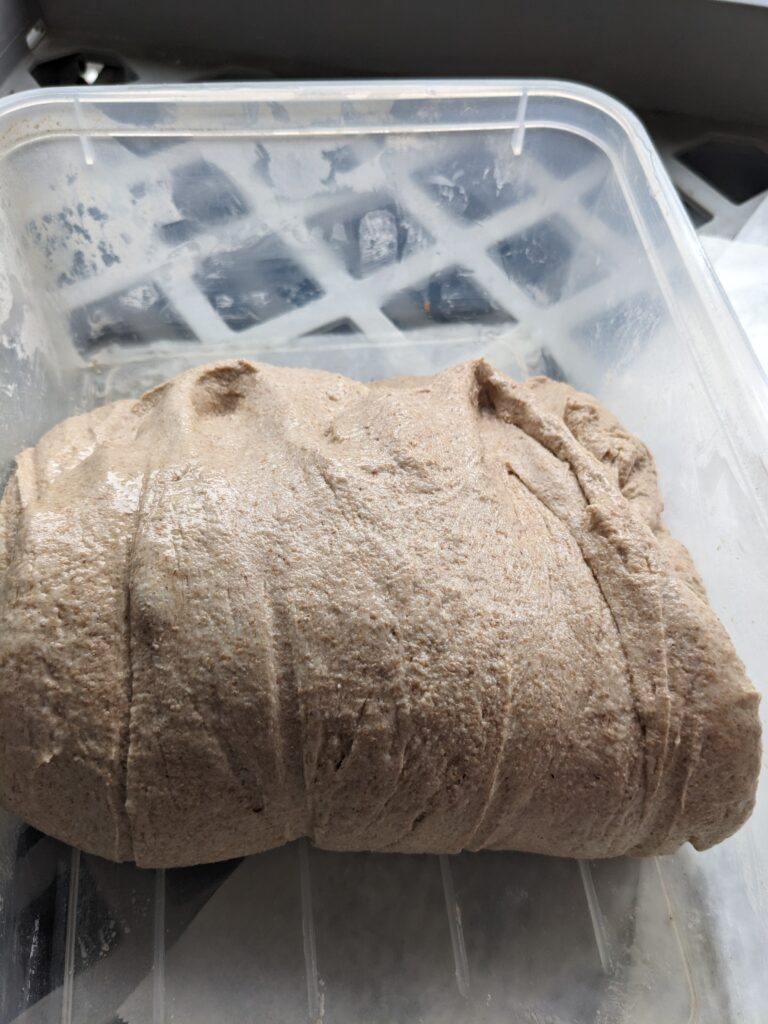
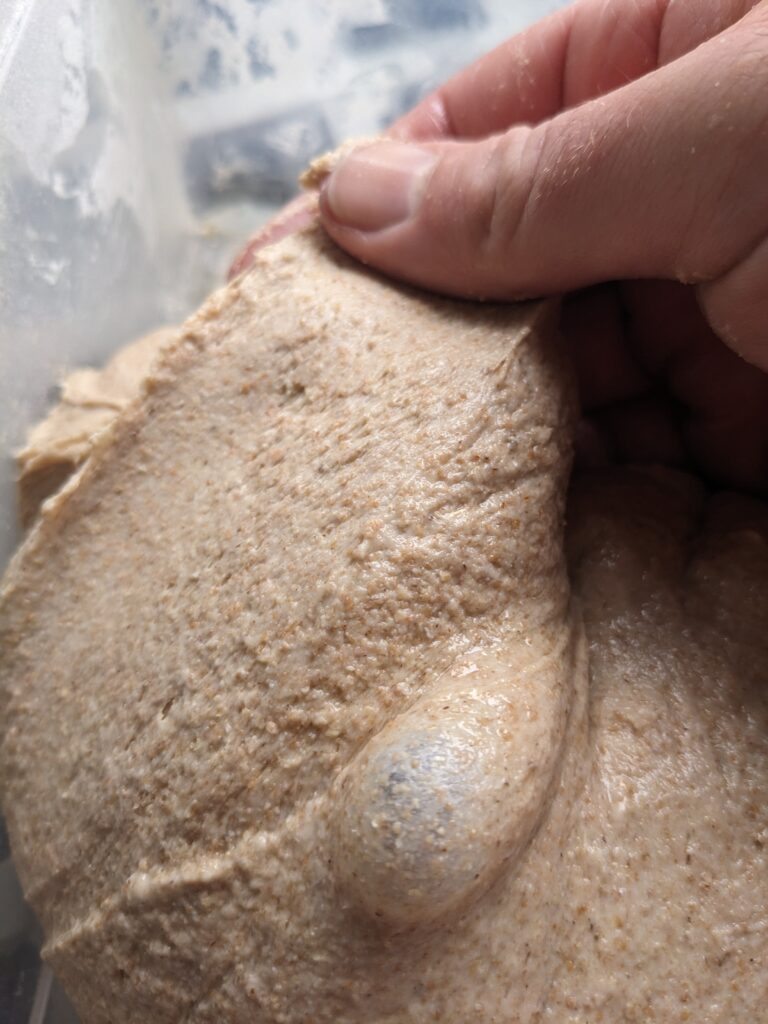
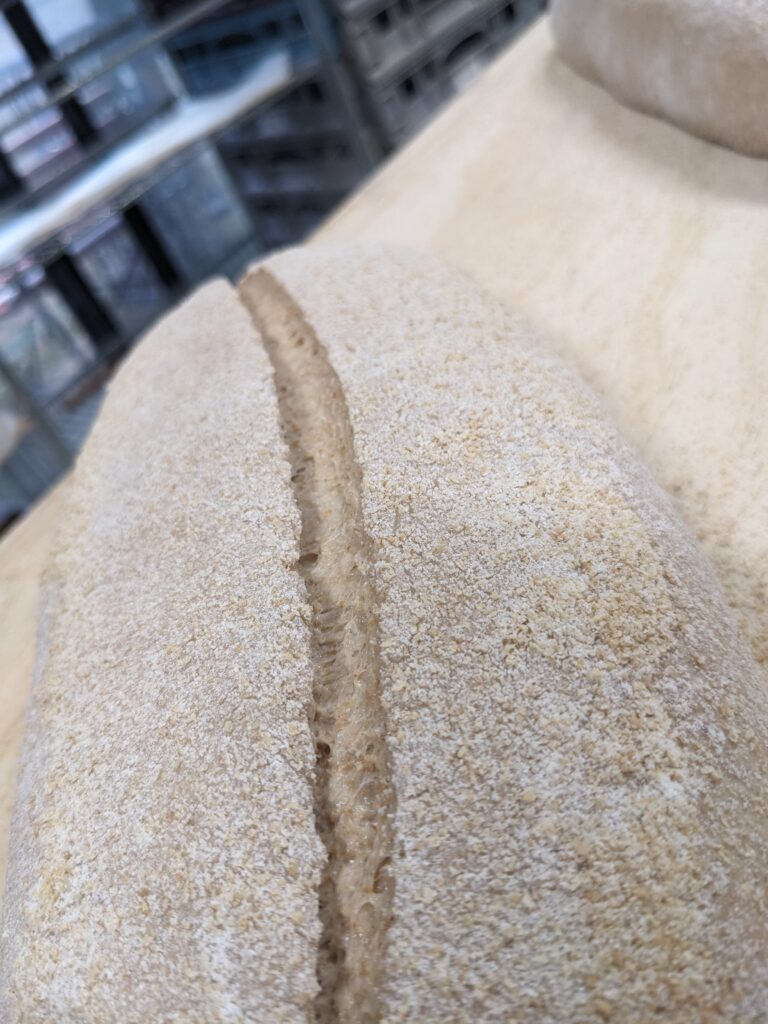
Final proof and bake
“Around 2hr final proof in couche. Held shape, being a touch dry it was tight though. The blade scored the dough easily although maybe I cut a little too deep. Good rise in the oven.
Lovely flavour & texture, stayed fresh for a couple days although we’d eaten it all within two days it was so tasty and soft!
Stronger flavour than the regular wholegrain white wheat loaves we’ve made. Sweet and no bitterness. Darker colour to the crumb than our usual loaves.”

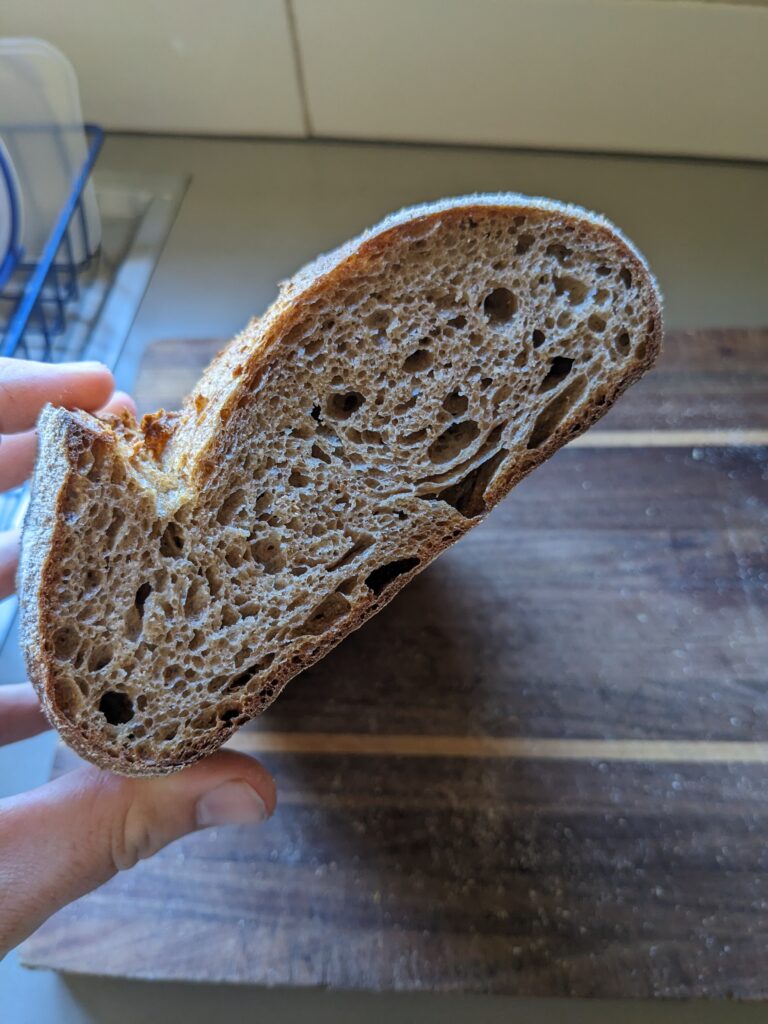

Can’t wait to see what Steve and Tan decide to do with the grains in 2024 and which ones will get resown. Time will tell and the farmers know best! More research and development to come.
by Nick
(with edits from Jac)


